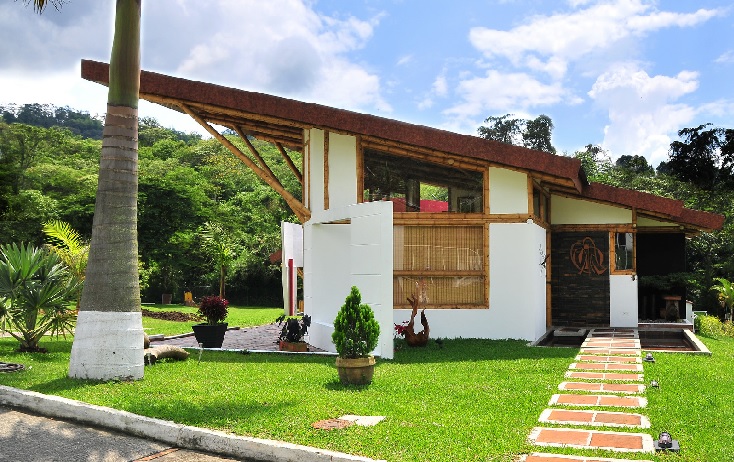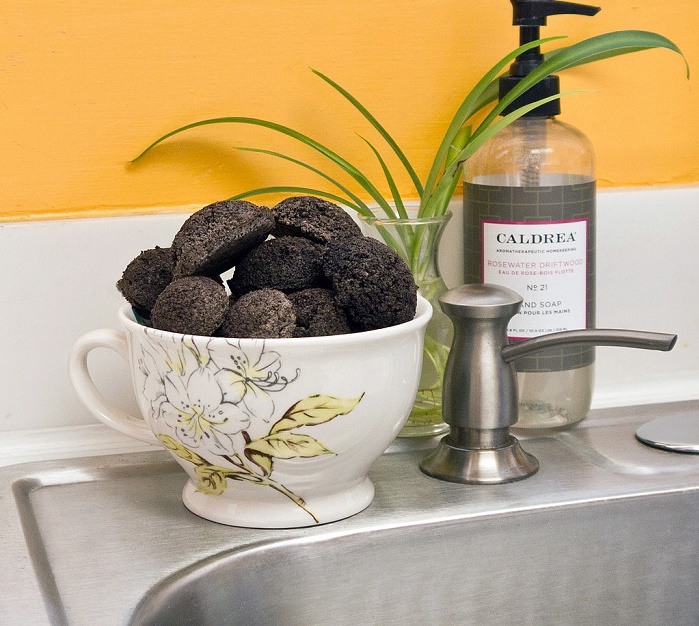The use of sustainable building materials has many benefits in addition to the environmental ones. It can be good for your health, productivity, and sometimes even your pocketbook. If you are going to build using sustainable materials, consider the materials in your place.
Sustainable materials and how to build a home with them
Materials that are grown and are renewable
Building materials that are natural and can be grown are one of the most popular in green buildings, as they can be renewable, and in many cases need little to no processing. These materials can be recycled after use.
Wood
Wood is a traditional building material and is still popular. It is considered one of the most sustainable. It requires little processing making it low power consumption. The Environmental Protection Agency (EPA) recommends using wood certified by recognized accreditation agencies so that harvesting practices and source sites do not harm precious forest ecosystems. These certificates also require that the wood not be treated for “toxic binders, coatings, preservatives, and pesticides.”
Worldwide there are 50 certification bodies and 15,000 companies using certified wood from 700 million acres of forests, according to a scientific article. Wood has the widest range of uses.
- Structural and load-bearing components such as roof beams, wall beams, panels.
- Non-structural elements such as window cuts, doors, cabinets, floors, walls and furniture.
Bamboo
Bamboo takes five to seven years to mature, compared to 50-100 years for other trees like maple and oak used for hardwood floors. This makes it a healthy environment. Some bamboo is even harder than red oak.
It can withstand a bit of wetting, and although it is prone to scratches, it can be easily refurbished to remove traces of wear and tear and look like new. It is recommended to check the certifications to ensure that the material is harvested sustainably and that the treatment does not produce emissions later on.
Its various colors make it a good and inexpensive flooring option, and it is used in cabinet and furniture manufacturing.
Cork
Cork is harvested from the bark of the tree, so the tree itself is not cut. It takes around seven years for the bark to grow back, so it is definitely an eco-friendly option. Cork is also naturally hypoallergenic and antimicrobial. Its price is also competitive, and it is considered an attractive option in general. It is widely available in the market.
It can be used for floors, as it has good acoustic and thermal insulation and for shock absorption.
Palm
Palm tree panels and boards are made from coconut or sugar palm stems after the tree has passed its fruitful years. 100-year-old trees can be used and the raw materials come from Asia. The palm is ideal for panels, veneers and floors.
Using this eco-friendly material can be helpful in obtaining LEED certification as it is non-toxic and does not cause air pollution. LEED (Leadership in Energy and Environmental Design) certification is for construction projects that meet the standards set by the US Green Building Council.
Straw
Thatched roofs of water reed haystacks, wheat reeds, long straw and ridges are old natural roofing materials, with a life expectancy of 10 to 45 years. Although not common, it is still used in UK homes, for example.
Products manufactured from natural materials
Products can be manufactured using natural raw materials, either alone or in combination with others. Their properties, quality, and aesthetic appeal are equal to or more than those of conventional or concrete chemicals, so it’s not just green-conscious users that are choosing them.
Sorghum
Sorghum is a tall millet, the lower woody stems of which are waste from crops or molasses production that were burned earlier, leading to air pollution. This waste is used to make boards and panels called Kirei that are polished with natural resins to keep them scratch-proof. It is used for floors and panels.
Being annual, which requires months from germination to harvest, it is one of the fastest renewable construction materials; and it does not pollute because it does not emit VOCs and does not have formaldehyde. It should be possible to grow this material organically for a completely chemical-free product. Its popularity is growing and it is sold through many outlets such as Green Building Supply and Kirei.
Cotton insulator
The cotton insulation is made from recycled cotton materials, such as leftover denim during the production of jeans. It is usually treated with boric acid to make it fireproof and resistant to pests. It can be used to insulate buildings of various types. In terms of performance, it is as good as conventional fiberglass. In fact, it actually has a couple of advantages over fiberglass, as:
- It does not contain formaldehyde like traditional fiberglass insulation.
- It does not cause skin irritation or respiratory problems.
Since it uses recycled material that would have been put into the landfill, this material is eligible for LEED certification. It is available through UltraTouch Cotton Insulation. It is biodegradable and the material can be recycled.
Paper
Paper is a brittle material, but it has many applications in construction projects. It is made from cellulose pulp, which is from wood waste and is recyclable. Some of its uses are:
- Internal and external walls (and / or panels). For example, Japan uses this type of wall or panel a lot. Because Japan is an earthquake-prone region, the use of this lightweight material does not wreak havoc when there are disasters. There are many types of construction items that this country uses with paper.
- Use wallpaper instead of paint. They need to be certified that they do not emit VOCs, which is what happens with conventional wallpaper.
Bio composites
An increasing number of fibers are being used to make bio composites. Many are available as precast particle board. They are typically made from more than one material to provide complementary properties, and are subject to resins according to a Stanford University study. These are renewable, biodegradable, recyclable and more varieties and blends are constantly being investigated.
The material is obtained from crop residues that use waste. However, given increasing demand, many high-yielding annual and perennial crops are specifically grown to make bio composites. The plant material used to make these bio composites comes from:
- Hop fibers derived from flax, hemp, jute, kenaf, miscanthus, cane, crop straw, bamboo, grass and more, according to the Food and Agriculture Organization of the United Nations (FAO)
- Foliar fibers of sisal, banana and palm.
- Seed fibers such as cotton, coconut fiber and kapok, according to FAO
Given the different types of products available on the market, the range of uses is wide. Bio composites are increasingly replacing petroleum-based and synthetic fiber compounds. 3-D printing of buildings or elements using bio composites was tested in the Netherlands in 2016. According to a scientific review (p. 23, 24, 25, 26), bio composites are used as:
- Structural elements such as beams, load-bearing roof and wall panels, and panels.
- Non-structural building components such as tiles, wall and ceiling insulation, wall and floor coverings, doors, windows, and cabinets.
Natural linoleum
Natural linoleum is made from natural material that can be grown and is renewable, such as linseed oil, cork, and wood flour mixed with resin and pigments. It requires low amounts of energy and can be safely disposed of without any problem. It is used for pavements.
Rugs
Carpets made of natural materials, whether of plant origin such as cotton or sisal and animal origin such as wool, are completely ecological. They have no chemicals and do not emit harmful toxins. They can be easily recycled as organic material at the end of their life cycle. It is a versatile flooring material that can be changed often and easily.
Natural paints
There are many types of natural paints available on the market that do not emit any VOCs (volatile organic compounds) and are not harmful to health. Many use traditional materials like paints based on casein from milk. Other materials used to make natural paints are plants, minerals, and clay. Mineral and plant-based paints have the widest color gamut. Milk-based colors need a coat of linseed oil, but are resistant to chipping. Clay-based paints are resistant to mold and also help moderate the temperature.
Naturally occurring materials
Most natural building materials have been in use for a long time as they are readily available and can be recycled.
Earth and clay
Earth and clay are the most sustainable building materials, as they require no processing, making their embodied energy practically zero. Land may be free if sourced on-site, or low in transportation cost if disposed of locally. Clay is a type of soil that has a fine texture and is high in kaolinite. The earth has been used in many ways in conjunction with specific techniques:
- Rammed-earth houses use a formwork made of panels as a frame, and a mixture of dirt, gravel, and sand builds up. The entire structure is elevated layer by layer. This is a healthy material as it ‘breathes’ and allows air in and out and helps moderate temperature and humidity. It is fire and pest resistant, hardy and popular in earthquake prone regions. With the wood reinforcement and other modern elements, it is still a viable option.
- Adobe bricks are the alternative to burnt bricks. However, bricks made from earth and clay must be fired in a kiln that uses wood and energy. Adobe is a process in which the mud or clay mixture is compressed into a brick and allowed to dry in the sun. Many fibers are also added to increase mechanical stability and increase its insulating ability, hemp and straw are recommended in adobe bricks.
- Wattle and shrub also use a mixture of clay and fiber. Instead of making blocks, the paste is used directly as a filler with a wooden frame.
Stones
Stones can be expensive as they have to be mined and their weight increases transportation costs. Commercial and residential buildings, therefore, often use other materials. However, stones remain a popular choice if they can be sourced locally for their permanence and low-maintenance characteristics.
- It is used to make walls, foundations, in the garden, and as decorative elements in the house such as fireplaces.
- Marble of different colors are widely used as countertops in kitchens and bathrooms, and sometimes as floors.
Lime
Lime is a mixture of calcium hydroxide and water and has been used for thousands of years. It is resistant to mold and improves air quality. It is also near carbon neutral, making it a green material that is popular again. Green lime stabilized by cactus prickly gel without any chemicals is also available. It is useful as a wall plaster and mortar for building blocks.
Recycled drywall
Gypsum is natural, but it has to be mined. Recycled gypsum, which extends the life cycle of this material, is therefore considered environmentally friendly. Gypsum is calcium sulfate mixed in water to create a white paste. Typically, this is used for plastering walls directly or as boards, referred to as drywall. It is prepared by spreading plaster on paper and drying it. If gypsum is discarded after a single use, under the anaerobic or oxygen-free conditions in landfills, hydrogen sulfite is produced which is harmful and smells like rotten eggs.
The reclaimed plaster does not lose any of its original qualities and can be used repeatedly without any loss of material or function. Recycled drywall is one of those rare materials that is as new as new. Therefore, the recycled plaster represents the use of closed circuit and makes it an environmentally friendly material.
Recovered and recycled materials
Many building materials can be reused if the demolition is done carefully so that the different elements can be saved. Building material can also come from other recycled materials.
Construction and demolition materials
Construction and demolition materials generally end up in landfills. However, there are many items that can be recovered and reused. It is not just about building materials, but about other items that can be recovered. Find the closest provider in your place. Salvageable items include:
- Dimensional wood, doors, windows, hardwood floors, kitchen cabinets.
- Stones, marble, bricks.
- Bathtubs, sinks, lighting fixtures.
Reclaimed wood
In addition to demolition material, wood can be salvaged from shipyards, old wine barrels, and old shipping material. The nails are removed, the wood is cleaned and ground to reveal the original texture and color. Check with local lumberyards, builders, and building contractors to see if they save wood for use in other projects or for sale.
Example criteria for certifying green building materials
There are some criteria that building materials must meet to be green according to the California Department of Recycling and Resource Recovery (Cal Recycle). Criteria considered by various certifying agencies often include:
Sustainability: the material must be sustainable, renewable and recyclable; for example, natural and local and cultivated so the supply is environmentally benign.
Energy efficiency: both the production and the resulting energy demand in the building must be energy efficient.
Air Pollution Controlled Quality – Green materials selected for construction must not cause indoor air pollution and harm human health.
Affordability: Materials must be affordable. Even if some upfront costs are high, a reduction in operating costs should help cover the additional upfront cost.
Waste management considerations: Building materials should not contribute to waste and landfills. The ability to recycle material, or use products made from recycled material which in turn reduces waste, makes the products environmentally friendly.








